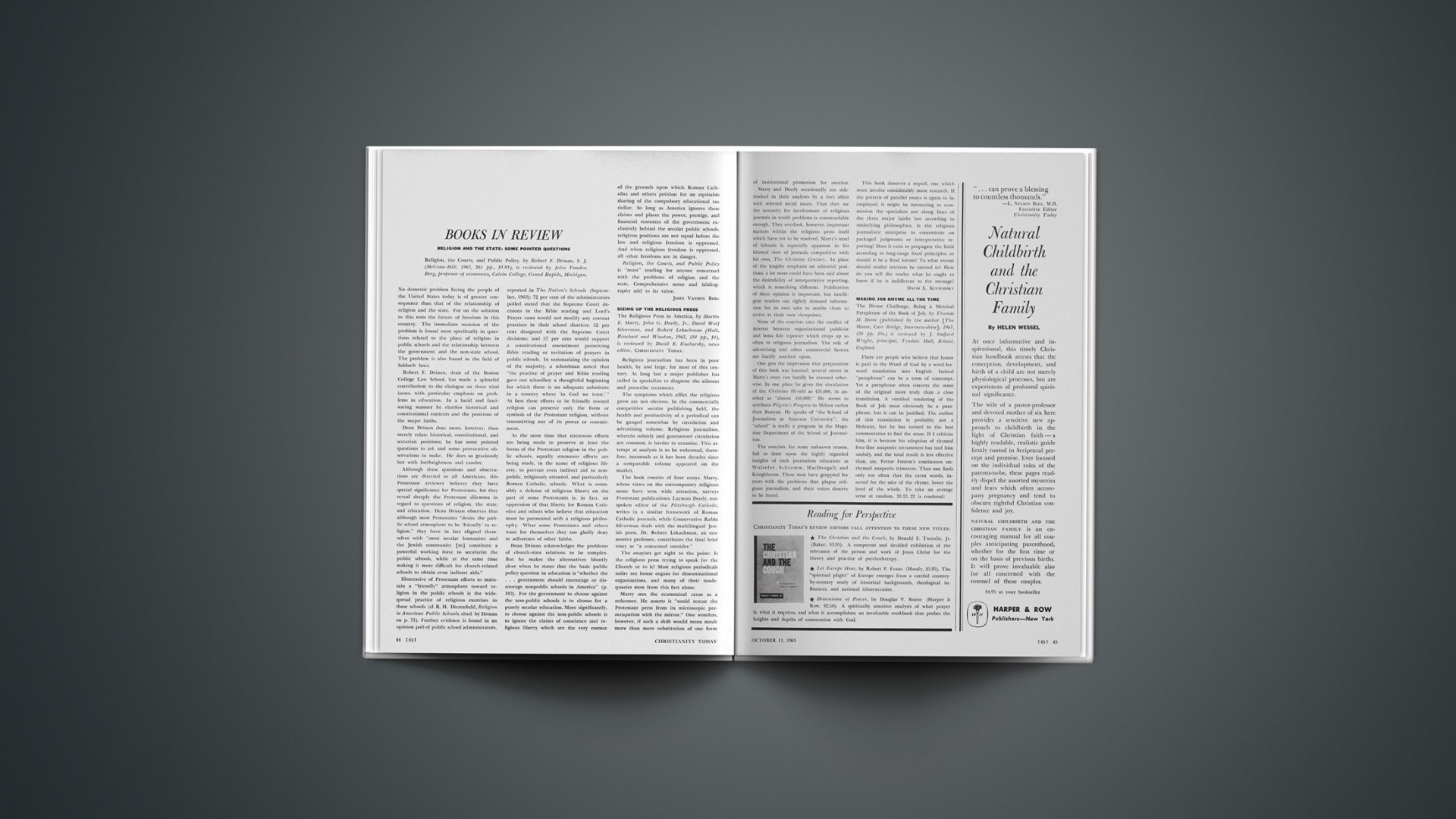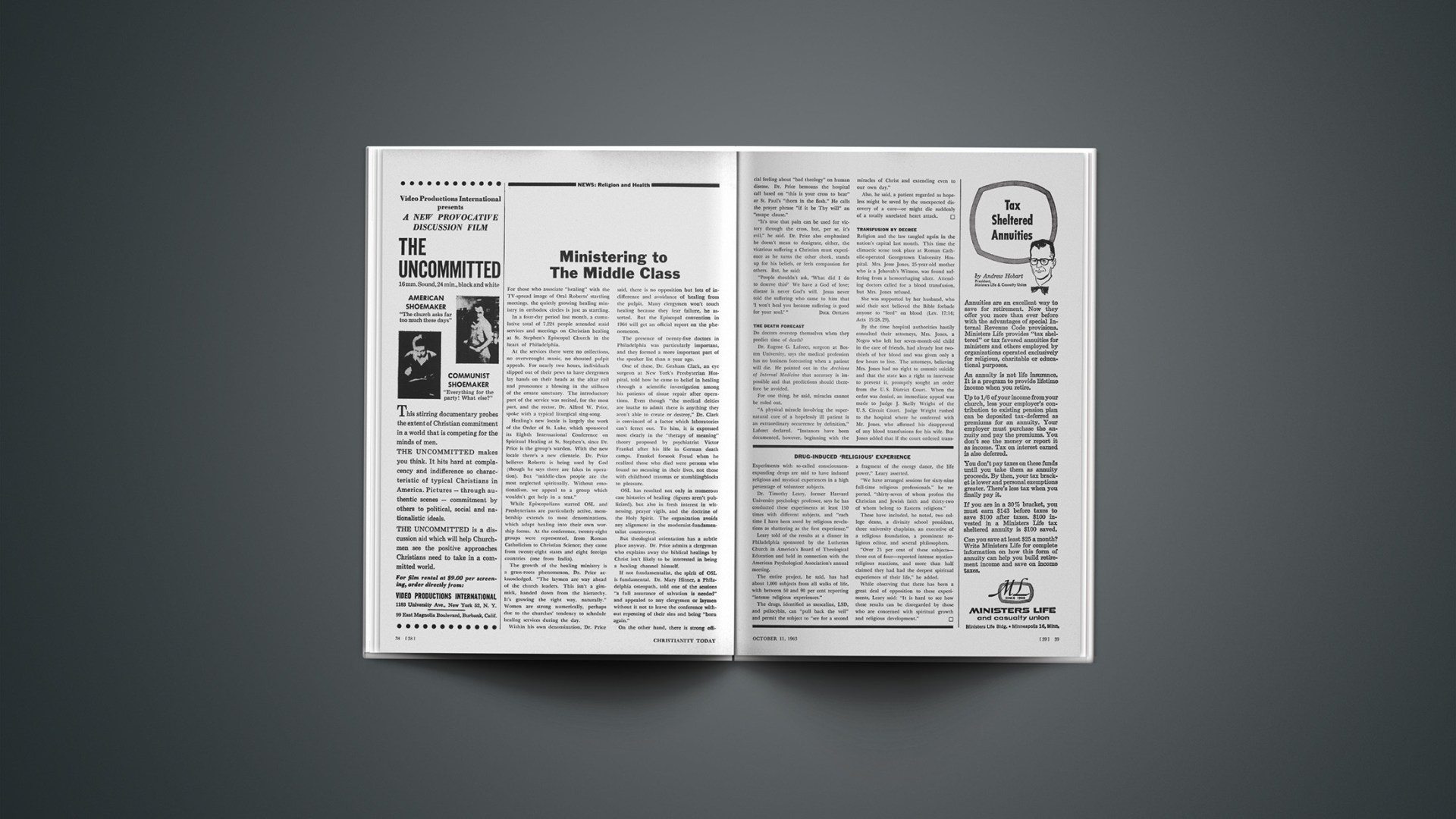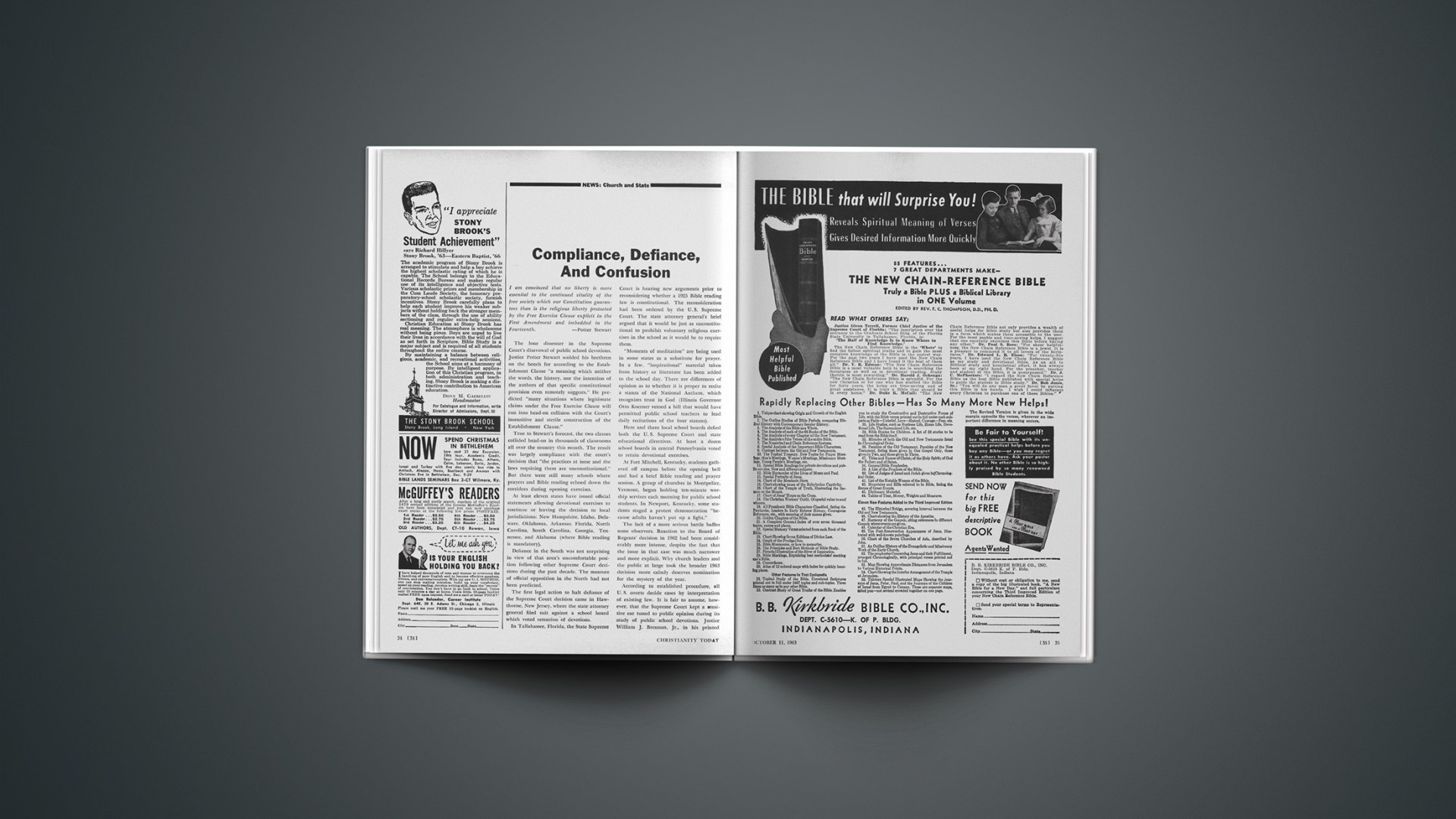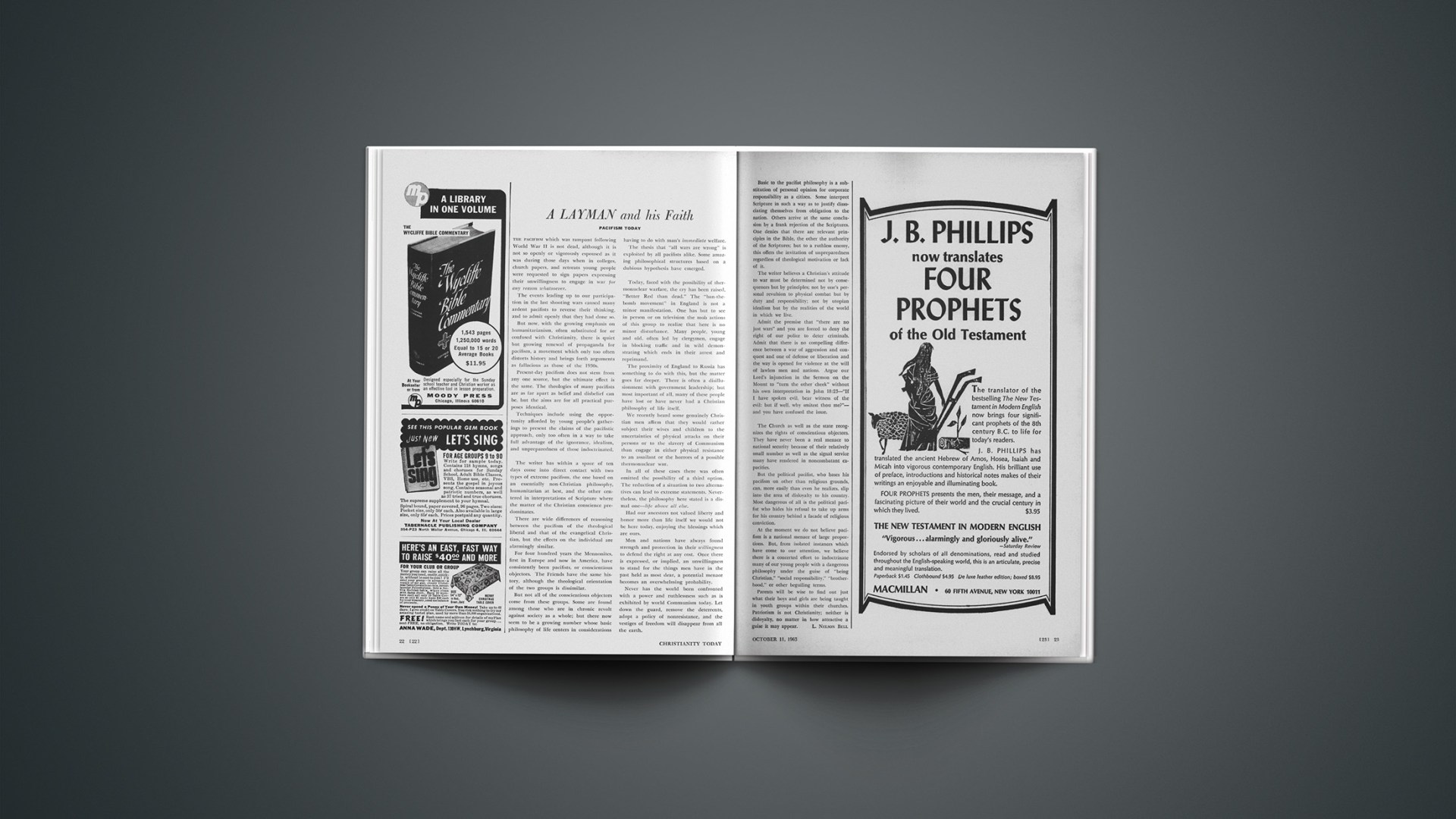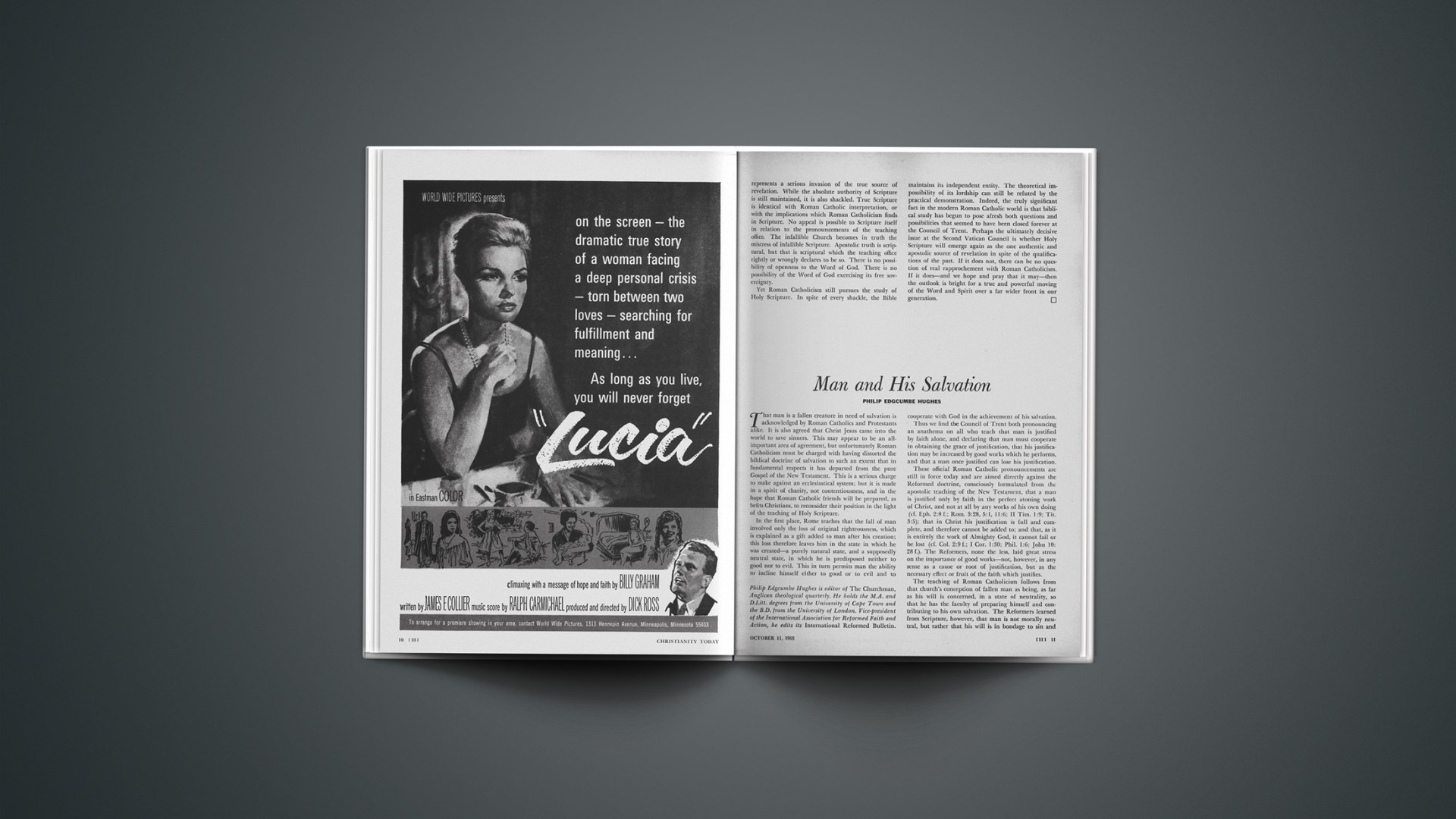A Question Of Audit
Six members seeking a court-ordered financial audit were expelled from the 4,000-member First Baptist Church of Fort Worth, Texas, last month. The court subsequently dismissed their suit against the church, ruling that since they were no longer members of the church they could not bring legal action against it. The court had initially restrained the pastor, the Rev. Homer G. Ritchie, from expelling the six. To avert defiance charges, Ritchie had his twin-brother associate conduct the congregational meeting in which they were removed from the rolls. The 36-year-old pastor previously was involved in controversies over his divorce from his first wife in 1959 and his remarriage this year to a 22-year-old member of his congregation. The church is affiliated with the Bible Baptist Fellowship.
Protestant Panorama
A plan for merging the Methodist and Evangelical United Brethren churches was adopted last month at the close of a two-day meeting of the commissions on church union representing the two denominations. The plan suggests calling the merged denomination “The United Methodist Church.” Consummation of the union cannot take place before 1968. Current U. S. Methodist membership is 10,234,986, while the EUB number 761,754.
A dedication service and cornerstone laying marked the opening of a new Southern Baptist college in Houston, Texas. The Houston Baptist College begins its first year with a faculty of thirty-one and about 400 students, on a 200-acre campus in the southwest section of the city.
The Japan Evangelical Lutheran Church is assigning its first overseas missionary. He is the Rev. Hiroshi Fujii, who with his wife and two children will be stationed in Sao Paulo, Brazil, where they will serve among people of Japanese origin.
Miscellany
President Kennedy’s nomination of Dr. John Austin Gronouski as Postmaster General gives the U. S. Cabinet three Roman Catholics, the most it has ever had.
The Religion and Labor Council of America announced last month that it had been granted tax-exempt status by the Internal Revenue Service. The organization’s initial request that gifts to it be deductible from the donor’s income tax was denied in 1958.
U. S. Secretary of State Dean Rusk and U. N. Secretary General U Thant headed a long list of dignitaries who participated in dedication ceremonies for the new twelve-story Church Center for the United Nations in Manhattan. The structure was built by Methodists and is being “programmed” by the National Council of Churches.
A suit to bar state aid to four sectarian Maryland colleges was filed last month by the Horace Mann League. The league, represented by New York lawyer Leo Pfeffer, indicated that the suit is aimed at testing the constitutionality of government aid to parochial education and probably will end up in the United States Supreme Court.
Some 10,000 persons witnessed the open-air dedication of the $3.4 million-dollar Air-Force Academy chapel at Colorado Springs, Colorado. The seventeen-spire chapel was erected amidst continuing controversy over its high cost and ultra-modernistic architecture.
More than 2,000 public decisions for Christ were reported in Brazil during an eleven-day evangelistic crusade conducted by Dr. Torrey M. Johnson. Negro singer Jimmie McDonald was featured soloist.
A new radio station designed to broadcast the Gospel went on the air in San Salvador last month. The station is the product of a cooperative effort among evangelicals from a number of denominations and missionary boards.
Deaths
DR. FRANKLIN I. SHEEDER, 68, head of publications work for the United Church of Christ; a suicide; in New York.
THE REV. JOHN GOWDY, 93, retired Methodist bishop and former missionary to China; in Winter Park, Florida.
GUY W. PLAYFAIR, 80, general director emeritus of Sudan Interior Mission; in Toronto.
Personalia
A Southern Baptist clergyman who preached against segregation and was asked to resign his pulpit announced plans to enter the Protestant Episcopal ministry. Dr. Henry J. Stokes, Jr., left as pastor of the First Baptist Church of Macon, Georgia, last year following a request from deacons.
Standing in the pulpit of his church before a large Sunday congregation in Johannesburg, the Rev. C. F. Beyers Naude, moderator of the Southern Transvaal Synod of the Dutch Reformed Church, announced his resignation from the ministry. His decision reportedly stemmed from his opposition to racial segregation.
Dr. Leon Morris appointed principal of Ridley College, Melbourne.
Dr. Park H. Netting named academic dean and professor of church history at Pacific Christian College.
Warren Allem appointed dean of the faculty at The King’s College.
The Rev. Irvin Elligan, a Negro minister, appointed associate secretary of the Division of Christian Action of the Presbyterian Church in the U. S. He will be given special responsibility in the field of human relations.
Dr. W. Harry Jellema named professor of philosophy at the newly opened Grand Valley State College, Allendale, Michigan.
The Rev. Arvid F. Carlson resigned as pastor of the Mission Covenant Church in Pasadena, California, to become minister of the First Covenant Church of San Jose, California.
Worth Quoting
“If the great truths of our faith are not worth defending, the laity cannot help but conclude they are not important enough to comprehend and believe.”—Dr. Wilbur M. Smith, professor of English Bible at Trinity Evangelical Divinity School.
“One should have a faith, and a very strong faith, something to lean upon through life.”—Donna Axum, Miss America of 1964.
“The defeat of segregation is not the end, and the mere destruction of discrimination does not render a people independent. For it is possible to win the battle against slavery and oppression and lose the victory of freedom.”—Dr. Joseph H. Jackson in his presidential address to the 83rd annual meeting of the National Baptist Convention, U. S. A., Inc.

